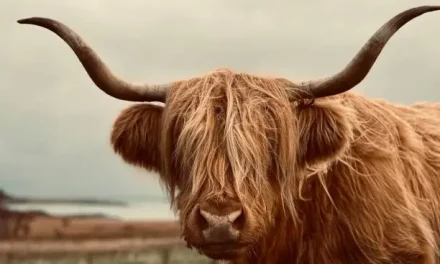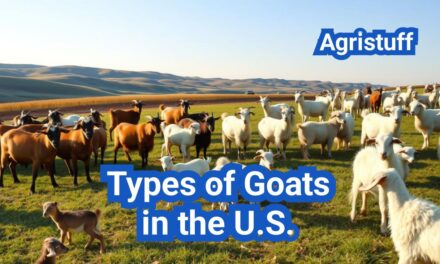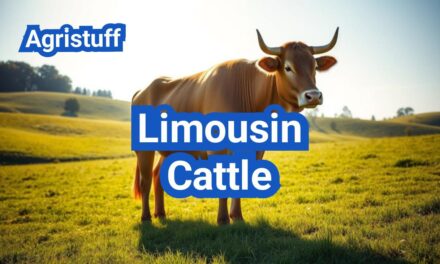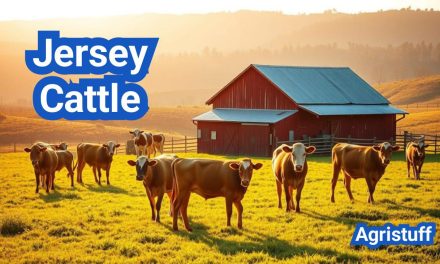Intensive animal farming is a method of raising animals in high-density conditions to maximize production while minimizing costs. This system, also known as factory farming, is used for various animals, including chickens, and cattle.
The advantages of this method include increased efficiency and lower costs. However, it also raises concerns about animal welfare and environmental impacts. As the demand for meat and dairy products continues to grow, understanding the implications of industrial farming is crucial.
Key Takeaways
- Intensive livestock farming maximizes production while minimizing costs.
- This method is used for various animals, including chickens, pigs, and cattle.
- Increased efficiency and lower costs are the primary advantages.
- Concerns about animal welfare and environmental impacts arise.
- Understanding the implications of industrial farming is crucial.
What Is Intensive Animal Farming: Definition and Core Concepts
Intensive animal farming, also known as factory farming, is an agricultural practice that focuses on high-density animal production. This method involves keeping large numbers of animals in relatively small areas to maximize efficiency and productivity.
Key Characteristics of Factory Farming
Factory farming is characterized by several key features, including high-density animal housing, automated feeding systems, and careful disease management. These characteristics allow for the efficient production of large quantities of meat, dairy, and eggs.
The use of automated systems is a hallmark of intensive animal farming, enabling farmers to manage large numbers of animals with minimal labor. This includes automated feeding and watering systems, as well as climate control systems to maintain optimal conditions for animal growth.
Historical Development of Modern Livestock Production
The development of modern livestock production has its roots in the mid-20th century, when technological advancements and changing consumer demands led to the intensification of animal agriculture. Over time, this has resulted in the widespread adoption of intensive farming practices globally.
The historical shift towards intensive farming was driven by the need to increase food production to meet growing global demand. This has led to significant changes in the way animals are raised, with a focus on efficiency and productivity.
Global Distribution and Economic Significance
Intensive animal farming is now a significant contributor to the global economy, providing food and income for millions of people. The global distribution of intensive farming operations varies, with different regions specializing in different types of animal production.
| Region | Primary Animal Products | Economic Impact |
|---|---|---|
| North America | Beef, Pork, Chicken | Significant contributor to local economies |
| Europe | Dairy, Pork, Chicken | Important for rural employment |
| Asia | Pork, Chicken, Eggs | Major source of protein for large populations |
The economic significance of intensive animal farming cannot be overstated, as it provides a vital source of income for many communities around the world.
Comparing Intensive and Extensive Livestock Farming Systems

Understanding the differences between intensive and extensive livestock farming is crucial for assessing their impact on the environment, animal welfare, and the economy. Livestock farming systems vary widely across the globe, with intensive and extensive methods representing two ends of the spectrum in terms of scale, resource utilization, and production intensity.
Fundamental Differences in Approach and Scale
Intensive livestock farming involves raising animals in confined spaces with controlled environments to maximize production efficiency. This approach relies heavily on technology, including automated feeding and watering systems, climate control, and health management protocols. In contrast, extensive livestock farming involves raising animals on large areas of land with minimal external inputs, allowing them to roam more freely.
The scale of operation is a significant differentiator between intensive and extensive farming. Intensive systems are typically larger in terms of animal numbers and are often located near markets or processing facilities to reduce transportation costs. Extensive systems, while sometimes large in land area, generally have lower animal densities.
Resource Utilization and Land Requirements
Resource utilization varies significantly between intensive and extensive livestock farming. Intensive systems require substantial inputs of feed, water, and energy, but they can produce a high volume of output relative to the land used. Extensive systems, on the other hand, require large areas of land but generally use fewer external inputs.
| Resource | Intensive Farming | Extensive Farming |
|---|---|---|
| Land Use | Lower land requirements | Higher land requirements |
| Feed Inputs | Higher feed inputs | Lower feed inputs |
| Water Usage | Controlled water usage | Natural water sources |
| Energy Consumption | Higher energy consumption | Lower energy consumption |
Production Output and Efficiency Comparison
Intensive livestock farming is generally more efficient in terms of production output per animal and per unit of land. This is due to the controlled environment and optimized feeding and health management practices. Extensive systems, while potentially more humane for animals, often have lower production efficiencies.
However, the efficiency of intensive systems comes with higher operational costs and potential environmental impacts, such as manure management issues and higher greenhouse gas emissions per animal.
Semi-Intensive Systems as a Balanced Alternative
Semi-intensive systems offer a middle ground between intensive and extensive farming. These systems combine elements of both, such as providing animals with shelter and supplementary feeding while still allowing them some freedom to roam. Semi-intensive systems can potentially offer a more balanced approach, improving animal welfare over intensive systems while being more productive than extensive systems.
The choice between intensive, extensive, and semi-intensive livestock farming depends on various factors, including environmental considerations, animal welfare concerns, economic viability, and market demands. Understanding these systems is crucial for making informed decisions about livestock production.
How to Implement Intensive Animal Farming Methods
Implementing intensive animal farming methods requires a comprehensive approach that includes several key components. This involves careful planning, advanced infrastructure, and efficient management practices to maximize production while maintaining animal welfare.
Setting Up Confined Animal Feeding Operations (CAFOs)
Confined Animal Feeding Operations (CAFOs) are a crucial aspect of intensive animal farming. CAFOs involve housing large numbers of animals in relatively small areas, which can help reduce costs and increase efficiency. However, it’s essential to ensure that these operations are managed carefully to prevent environmental degradation and maintain animal health.
The setup of CAFOs requires meticulous planning, including the design of facilities that provide adequate ventilation, sanitation, and animal comfort. Proper waste management is also critical to prevent the buildup of pollutants and reduce the risk of disease.
Designing High-Density Housing Systems
High-density housing systems are another vital component of intensive animal farming. These systems are designed to maximize space while ensuring the health and welfare of the animals. Key considerations include providing adequate ventilation, lighting, and living space for the animals.
The design of high-density housing systems should also incorporate features that reduce stress and promote animal health, such as appropriate grouping and adequate feeding and watering systems. Regular monitoring and maintenance are essential to ensure the ongoing health and productivity of the animals.
Implementing Automated Feeding and Watering Systems
Automated feeding and watering systems are critical for the efficient operation of intensive animal farming. These systems help ensure that animals receive a consistent and nutritious diet, which is essential for their health and productivity.
Automated feeding systems can be programmed to provide feed at optimal times, reducing waste and improving feed conversion ratios. Similarly, automated watering systems ensure that animals have access to clean water at all times, which is vital for their health.
Utilizing Growth Promotion and Production Enhancement Techniques
Growth promotion and production enhancement techniques are used in intensive animal farming to improve the efficiency and productivity of the operation. These techniques can include the use of nutritional supplements, hormonal treatments, and genetic selection.
It’s crucial to use these techniques judiciously, ensuring that they are safe for the animals, the environment, and consumers. Regular monitoring and adjustment of these techniques are necessary to optimize their effectiveness and minimize potential risks.
“The future of animal farming lies in its ability to balance productivity with sustainability and animal welfare.” – Expert in Animal Agriculture
Essential Infrastructure and Technology Requirements

Advanced infrastructure and cutting-edge technology are crucial for the viability of intensive animal farming systems. The integration of these elements not only enhances productivity but also ensures the sustainability and welfare of the animals.
Planning and Constructing Appropriate Facilities
The design and construction of facilities in intensive animal farming are critical. Facilities must be tailored to the specific needs of the animals, whether it’s for cattle, poultry, or pigs. Proper ventilation, lighting, and space allocation are key factors that influence animal health and productivity.
For instance, in poultry farming, the design of chicken houses with automated systems for feeding, watering, and egg collection can significantly boost efficiency. Similarly, in pig farming, farrowing pens and gestation stalls are designed to meet the specific needs of sows and piglets.
Installing Effective Climate Control Systems
Climate control is vital in intensive animal farming as it directly impacts animal comfort and productivity. Effective climate control systems help maintain optimal temperatures, humidity levels, and air quality within the facilities.
A well-designed climate control system can include features such as:
- Ventilation systems to remove stale air and bring in fresh air
- Heating and cooling systems to maintain optimal temperatures
- Humidification and dehumidification systems to control humidity levels
These systems are often automated and can be monitored remotely, ensuring that the environment within the facilities remains optimal for the animals.
Implementing Waste Management Technologies
Waste management is a significant challenge in intensive animal farming. Effective waste management technologies are essential to minimize environmental impact and maintain a healthy environment for the animals.
| Waste Management Technology | Description | Benefits |
|---|---|---|
| Anaerobic Digestion | Breaks down organic waste to produce biogas | Renewable energy source, reduces waste volume |
| Manure Composting | Converts manure into a stable, nutrient-rich compost | Reduces waste, produces valuable fertilizer |
| Wastewater Treatment | Treats wastewater to remove contaminants | Protects water resources, reduces environmental impact |
Implementing these technologies not only helps in managing waste effectively but also contributes to the overall sustainability of the farming operation.
Setting Up Monitoring and Data Management Systems
Monitoring and data management are crucial for optimizing the performance of intensive animal farming operations. These systems allow farmers to track various parameters such as feed consumption, growth rates, and environmental conditions in real-time.
“Data-driven decision making is the future of agriculture. By leveraging data analytics, farmers can improve efficiency, reduce costs, and enhance animal welfare.” –
Agriculture Expert
Advanced data management systems can also help in predicting potential issues, such as disease outbreaks, allowing for proactive measures to be taken.
By integrating these essential infrastructure and technology requirements, intensive animal farming operations can achieve higher productivity, better animal welfare, and reduced environmental impact.
Developing Intensive Cattle and Dairy Farming Operations
Intensive cattle and dairy farming operations are crucial for meeting the global demand for meat and dairy products. These operations involve raising animals in high-density conditions to maximize production efficiency.
The development of intensive cattle and dairy farming requires careful planning and management. Farmers need to establish efficient systems for feeding, breeding, and health management to ensure the well-being of the animals and the sustainability of the operation.
Establishing Feedlot Operations for Beef Production
Feedlot operations are a critical component of intensive beef production. These operations involve confining cattle to a specific area where they are fed a diet designed to promote rapid growth.
- Selecting appropriate breeds for feedlot conditions
- Implementing effective feeding strategies
- Maintaining optimal health and welfare standards
Effective feedlot management can significantly enhance beef production efficiency. According to the National Cattlemen’s Beef Association, well-managed feedlots can achieve higher growth rates and better feed conversion ratios.
Creating Modern Dairy Production Systems
Modern dairy production systems focus on maximizing milk yield while ensuring the health and welfare of dairy cows. This involves implementing advanced technologies and management practices.
Key elements of modern dairy production include:
- Advanced milking systems
- Precision feeding technologies
- Effective cow comfort and health monitoring
As noted by dairy farming experts, “The integration of technology in dairy farming has revolutionized the way farmers manage their herds, leading to improved productivity and animal welfare.”
By adopting these modern practices, dairy farmers can enhance milk production while maintaining sustainable and humane farming practices.
Establishing Intensive Poultry Production Systems

Establishing intensive poultry production systems requires careful planning, advanced technology, and a deep understanding of poultry health and nutrition. Intensive poultry production involves raising chickens in high-density conditions to maximize production, which includes setting up broiler production systems and developing layer operations.
Setting Up Broiler (Meat) Production
Broiler production is a significant component of intensive poultry farming, focusing on raising chickens specifically for meat production. To set up an efficient broiler production system, farmers must consider several key factors, including housing, nutrition, and health management.
Efficient Housing: Broiler chickens are typically raised in large, climate-controlled houses that provide optimal conditions for growth. These facilities are equipped with automated systems for feeding, watering, and ventilation to ensure a healthy environment.
Nutritional Requirements: Broilers have specific dietary needs that must be met to achieve optimal growth rates. Nutritionists formulate feed that is rich in proteins, vitamins, and minerals necessary for healthy development.
Developing Layer (Egg) Operations
Layer operations focus on producing eggs for consumption and require a different approach compared to broiler production. Establishing a successful layer operation involves careful consideration of hen housing, nutrition, and egg handling practices.
- Hen Housing: Layer hens are often kept in cage systems or alternative housing such as aviaries or free-range systems. Each system has its advantages and challenges, including considerations for hen welfare and egg production efficiency.
- Nutrition and Egg Production: Layer hens require a balanced diet that supports both their health and egg production. Nutritional programs are designed to optimize egg quality and quantity.
By understanding the specific needs of both broiler and layer production, farmers can establish intensive poultry production systems that are efficient, sustainable, and profitable.
Managing Intensive Pig Farming Operations
Intensive pig farming involves a range of practices designed to optimize pig production in high-density environments. This approach to farming is characterized by its focus on efficiency and productivity, requiring careful management of various aspects of pig production.
Organizing Farrowing and Finishing Operations
A key aspect of intensive pig farming is the organization of farrowing and finishing operations. Farrowing operations involve the care of sows and piglets during the birthing process, while finishing operations focus on raising pigs to market weight. Effective management of these operations is crucial for maximizing productivity.
The farrowing stage requires specialized facilities and care to ensure the health and well-being of both sows and piglets. This includes providing appropriate nutrition, monitoring health, and maintaining a clean environment.
Designing Appropriate Housing Systems
The design of housing systems is critical in intensive pig farming. These systems must provide a comfortable and healthy environment for the pigs, while also facilitating efficient management practices.
Modern housing systems for pigs often incorporate features such as controlled ventilation, temperature regulation, and automated feeding systems. These features help to reduce stress on the animals and improve overall productivity.
Implementing Effective Feeding Regimens
Feeding regimens play a vital role in intensive pig farming, as they directly impact the growth rate and health of the pigs. Nutritional management involves providing diets that are tailored to the specific needs of pigs at different stages of their growth.
Effective feeding strategies can help to optimize feed conversion ratios, reduce waste, and promote healthy growth. This includes the use of high-quality feed ingredients and the implementation of feeding schedules that match the pigs’ needs.
Addressing Health Challenges in High-Density Environments
High-density pig farming environments can pose health challenges, including the increased risk of disease transmission. Biosecurity measures are essential for mitigating these risks and maintaining the health of the pig population.
Strategies for addressing health challenges include implementing vaccination programs, maintaining strict hygiene practices, and monitoring the health of pigs regularly. By taking proactive measures, farmers can reduce the incidence of disease and promote a healthy environment for their pigs.
Optimizing Intensive Sheep and Goat Production

Optimizing intensive sheep and goat production requires a comprehensive approach to animal husbandry, focusing on housing, breeding, nutrition, and health management to maximize production efficiency.
Designing Indoor Housing Systems
Effective indoor housing systems are crucial for intensive sheep and goat farming. These systems should provide adequate ventilation, sufficient space, and protection from extreme weather conditions.
Key considerations for indoor housing include:
- Space allocation per animal
- Ventilation and climate control systems
- Flooring and bedding materials
- Feeding and watering systems
Implementing Breeding Programs
Breeding programs play a vital role in improving the productivity of sheep and goats. These programs should focus on genetic selection for desirable traits such as higher milk production, better wool quality, or faster growth rates.
A well-structured breeding program involves:
- Selection of superior breeding stock
- Record-keeping of animal performance
- Implementation of breeding strategies (e.g., crossbreeding, purebred selection)
Developing Nutrition and Health Management Protocols
Nutrition and health management are critical components of intensive sheep and goat production. Farmers should develop feeding strategies that meet the nutritional needs of their animals at different stages of production.
| Nutritional Needs | Health Management Practices |
|---|---|
| Energy and protein requirements | Vaccination programs |
| Mineral and vitamin supplementation | Parasite control measures |
| Feed quality and quantity management | Monitoring for signs of illness |
Maximizing Wool and Milk Production
To maximize wool and milk production, farmers should implement best practices in animal husbandry, including regular health checks, optimal nutrition, and appropriate milking or shearing techniques.
Key strategies for maximizing production include:
- Genetic selection for high-producing animals
- Optimized feeding regimens
- Regular veterinary care
Addressing Environmental Impacts of Intensive Animal Farming

The environmental consequences of intensive animal farming are multifaceted, requiring comprehensive mitigation strategies. As the agricultural sector continues to intensify, it’s crucial to address the ecological footprint of these operations.
Solving Waste Management Challenges
Effective waste management is critical in intensive animal farming. Manure and other waste products can pollute waterways and soil if not handled properly. Some strategies for improving waste management include:
- Implementing manure storage systems that prevent leakage and runoff
- Utilizing anaerobic digesters to convert waste into biogas and fertilizer
- Developing nutrient management plans to optimize the use of manure as fertilizer
Reducing Greenhouse Gas Emissions
Intensive animal farming is a significant source of greenhouse gas emissions, including methane and nitrous oxide. To mitigate this impact, farmers can:
- Improve feed efficiency to reduce the amount of methane produced per unit of production
- Implement manure management practices that capture and utilize methane
- Adopt breeding programs that select for animals with lower emission profiles
Minimizing Land and Water Resource Usage
Intensive animal farming often requires significant land and water resources. To minimize these impacts, farmers can adopt practices such as:
- Precision agriculture techniques to optimize feed crop production
- Water-saving technologies in animal housing and manure management systems
- Rotational grazing and other land management practices to maintain soil health
Implementing Mitigation Strategies and Technologies
The adoption of new technologies and management practices is crucial for reducing the environmental impacts of intensive animal farming. Some promising approaches include:
- Advanced manure treatment technologies
- Precision livestock farming techniques that monitor and manage animal health and welfare
- Innovative housing designs that improve animal comfort and reduce environmental impacts
By implementing these strategies, the intensive animal farming sector can reduce its environmental footprint while maintaining productivity and efficiency.
Ensuring Animal Welfare in Intensive Systems

Maintaining high standards of animal welfare is essential for the long-term viability of intensive animal farming. As the industry continues to evolve, addressing the complex issues surrounding animal welfare becomes increasingly important.
Addressing Common Welfare Concerns
Intensive animal farming systems often face challenges related to animal welfare, including overcrowding, inadequate ventilation, and insufficient access to natural light. Farmers must prioritize these issues to ensure the health and well-being of their animals. Implementing measures such as improved housing designs and enhanced husbandry practices can significantly mitigate these concerns.
Complying with Regulatory Frameworks and Standards
Compliance with existing regulatory frameworks and standards is crucial for maintaining animal welfare in intensive farming systems. Farmers must stay informed about relevant laws and guidelines that govern animal welfare in their region. Regular audits and inspections can help ensure adherence to these standards.
Conducting Welfare Assessments
Regular welfare assessments are vital for identifying potential issues before they become major problems. These assessments should include evaluations of animal behavior, health, and living conditions. Using data from these assessments, farmers can make informed decisions to improve animal welfare.
Balancing Productivity with Ethical Treatment
One of the key challenges in intensive animal farming is balancing productivity with ethical treatment of animals. While maximizing production is important, it should not come at the expense of animal welfare. Implementing practices that promote both efficiency and animal well-being is essential for sustainable farming operations.
Analyzing Economic Aspects of Intensive vs. Extensive Farming

Understanding the economic aspects of intensive versus extensive farming is essential for making informed decisions in agricultural production. The economic viability of these farming systems depends on various factors, including production costs, market demands, and the ability to overcome economic sustainability challenges.
Calculating Production Costs and Efficiency
One of the primary economic considerations in farming is the calculation of production costs and efficiency. Intensive farming often involves higher initial investments in infrastructure and technology, but it can lead to higher yields and potentially greater efficiency in resource utilization. In contrast, extensive farming may have lower initial costs but could result in lower productivity per unit area.
Responding to Market Demands and Consumer Preferences
Farmers must be responsive to market demands and consumer preferences to ensure the economic sustainability of their operations. This involves understanding consumer needs, adapting production accordingly, and potentially diversifying products to meet various market segments.
Overcoming Economic Sustainability Challenges
Economic sustainability is a significant challenge for both intensive and extensive farming systems. Factors such as fluctuating market prices, regulatory changes, and environmental concerns can impact profitability. Farmers need to develop strategies to mitigate these risks, such as diversifying their operations or adopting innovative technologies.
Creating Financial Plans for Different Systems
Developing comprehensive financial plans is crucial for the success of farming operations. This involves budgeting for production costs, forecasting revenue, and managing cash flow. For intensive farming, this might include investments in high-tech equipment and infrastructure, while extensive farming might focus more on land management and lower-cost inputs.
By carefully analyzing these economic aspects, farmers can make informed decisions about which farming system is most suitable for their circumstances and goals.
How to Transition Between Farming Systems

Changing farming systems, whether from intensive to extensive or vice versa, demands careful planning and execution. Farmers must consider their farm’s suitability, follow a structured conversion process, and potentially adopt hybrid management approaches to ensure a successful transition.
Assessing Your Farm’s Suitability for Different Methods
Before transitioning, it’s crucial to assess your farm’s suitability for different farming methods. This involves evaluating factors such as land availability, existing infrastructure, and the current animal health status. Intensive animal farming, for instance, requires significant investment in housing and feeding systems, while extensive livestock farming demands large areas of grazing land.
| Farming System | Land Requirement | Infrastructure Needs | Animal Health Considerations |
|---|---|---|---|
| Intensive | Low | High-density housing, automated feeding | Higher risk of disease transmission |
| Extensive | High | Grazing land, minimal infrastructure | Lower risk of disease, higher risk of injury |
| Hybrid | Moderate | Combination of intensive and extensive infrastructure | Balanced disease and injury risk |
Following a Step-by-Step Conversion Process
Transitioning between farming systems should be done in a step-by-step manner. This includes planning the conversion, implementing changes in infrastructure and management practices, and monitoring the transition’s progress. Hybrid management approaches can be particularly useful during this phase, allowing farmers to leverage the benefits of both intensive and extensive systems.
Implementing Hybrid and Adaptive Management Approaches
Hybrid systems combine elements of both intensive and extensive farming, offering a balanced approach. These systems can provide the welfare benefits of more space while still utilizing some of the efficiency and productivity gains of intensive systems. Implementing such approaches requires flexibility and a willingness to adapt management practices as needed.
Learning from Case Studies of Successful Transitions
Examining case studies of farms that have successfully transitioned between different farming systems can provide valuable insights. These studies can highlight best practices, common challenges, and strategies for overcoming obstacles during the transition process.
The Future of Animal Farming
The future of animal farming is likely to involve a combination of intensive and extensive systems. As the global demand for animal products continues to rise, farmers must adopt sustainable practices to ensure a sustainable future.
Intensive animal farming will continue to play a significant role in meeting this demand, but it needs to be balanced with sustainable and humane practices. This includes improving animal welfare, reducing environmental impacts, and implementing sustainable farming methods.
By adopting these practices, farmers can help ensure a sustainable future for animal farming. The industry must work together to address the challenges associated with intensive animal farming and promote sustainable farming practices.
The future of animal farming depends on the ability of farmers to adapt to changing consumer demands and environmental concerns while maintaining productivity and efficiency.
FAQ
What is intensive animal farming?
Intensive animal farming is a system of farming that involves raising animals in high-density conditions to maximize production. This method is used for various animals, including chickens, pigs, and cattle.
How does intensive animal farming differ from extensive farming?
Intensive systems involve high-density animal housing and automated feeding systems, while extensive systems involve raising animals on large areas of land.
What are the advantages of intensive animal farming?
The advantages of intensive animal farming include increased efficiency and lower costs.
What are the environmental impacts of intensive animal farming?
Intensive animal farming has significant environmental impacts, including waste management challenges, greenhouse gas emissions, and land and water resource usage.
How does intensive animal farming affect animal welfare?
Intensive animal farming raises concerns about animal welfare, and farmers need to address common welfare concerns, comply with regulatory frameworks, and conduct welfare assessments to balance productivity with ethical treatment.
What is the role of technology in intensive animal farming?
Technology plays a crucial role in intensive animal farming, including automated feeding and watering systems, climate control systems, and waste management technologies.
Can intensive animal farming be sustainable?
Intensive animal farming can be sustainable if farmers implement mitigation strategies and technologies, such as waste management solutions and greenhouse gas reduction techniques.
What are the economic benefits of intensive animal farming?
Intensive animal farming provides food and income for millions of people, and can be economically sustainable if farmers calculate production costs and efficiency, respond to market demands, and create financial plans.
How can farmers transition from extensive to intensive farming systems?
Farmers can transition from extensive to intensive farming systems by assessing their farm’s suitability, following a step-by-step conversion process, and implementing hybrid management approaches.
What are the challenges of transitioning between farming systems?
Transitioning between farming systems can be challenging, but farmers can overcome these challenges by careful planning and management.
What is factory farming?
Factory farming is another term for intensive animal farming, which involves raising animals in high-density conditions to maximize production.
What are the advantages and disadvantages of intensive livestock production?
The advantages of intensive livestock production include increased efficiency and lower costs, while the disadvantages include concerns about animal welfare and environmental impacts.
How does intensive livestock production impact human health?
Intensive livestock production can impact human health through the use of antibiotics and other chemicals, as well as the potential for zoonotic diseases.
Conclusion of: Intensive Animal Farming
Intensive animal farming, also known as factory farming or industrial animal agriculture, refers to a farming system where large numbers of animals are reared in confined spaces to maximize production while minimizing costs. This agricultural practice aims to produce significant quantities of meat, dairy, and eggs quickly and economically. Although intensive animal farming is economically advantageous, it also generates notable ethical and environmental concerns.
What is Intensive Animal Farming?
Intensive animal farming involves keeping livestock at high stocking densities, using advanced methods and technologies to boost productivity. The core idea behind intensive animal farming is the optimization of inputs and outputs, making it possible to raise numerous animals in limited spaces with rapid growth rates.
For further information, you can visit the United States Department of Agriculture USDA.
Methods Used in Intensive Animal Farming
Several methods characterize intensive animal farming. These methods include confinement systems, selective breeding, use of antibiotics and hormones, and specialized feeding practices.
- Confinement Systems: Animals are often housed in restricted environments like cages, pens, or feedlots, limiting their natural behaviors to save space and reduce labor.
- Selective Breeding: This involves choosing animals with desired genetic traits to breed, improving productivity.
- Use of Antibiotics and Hormones: These substances help in promoting rapid growth and preventing diseases prevalent in overcrowded conditions.
- Specialized Feeding Practices: Nutrient-dense, formulated feeds maximize the growth rate and efficiency of livestock.
For a deeper understanding of these methods, refer to the U.S. Environmental Protection Agency EPA.
Systems of Intensive Animal Farming
Various systems constitute intensive animal farming, each tailored to the specific needs of different types of livestock.
- Poultry Farming: Often characterized by battery cages, this system allows thousands of birds to be reared in small spaces.
- Pig Farming: Typically involves confinement in gestation crates or pens, which restrict movement significantly.
- Cattle Feedlots: Beef cattle are kept in large outdoor feedlots, where they are fattened rapidly on specialized diets.
- Dairy Farms: Dairy cattle are kept in indoor facilities or dry lots and milked intensively to maximize production.
For comprehensive information on these systems, visit Cornell University’s Dairy Management Program.
Examples of Intensive Animal Farming
Intensive animal farming is prevalent worldwide. The U.S. and China dominate intensive poultry farming, raising millions of chickens annually. Similarly, intensive pig farming operations in the U.S. and Europe rear thousands of pigs in single locations.
An example is Smithfield Foods, one of the largest pig producers globally, known for intensive farming practices to maximize pork production efficiently.
For real-world case studies and examples, the Cooperative Extension System offers valuable insights.
Advantages of Intensive Animal Farming
The primary advantage of intensive animal farming is economic efficiency. Some notable benefits include:
- High Productivity: Intensive farming significantly increases meat, dairy, and egg production.
- Lower Costs: Economies of scale result in reduced production costs per unit.
- Meeting Global Demand: It supports the growing global demand for animal-based foods.
- Employment Opportunities: Provides jobs in various sectors, from farming to processing and retail.
A thorough economic analysis is available at the Food and Agriculture Organization.
Disadvantages of Intensive Animal Farming
Despite its advantages, intensive animal farming presents numerous drawbacks:
- Animal Welfare Issues: Overcrowding and confinement can cause severe stress, illness, and unnatural behavior in animals.
- Environmental Impact: Intensive farming significantly contributes to water pollution, air pollution, and biodiversity loss.
- Health Concerns: Excessive use of antibiotics in animal farming may lead to antibiotic-resistant bacteria.
- Ethical Concerns: Ethical questions arise concerning the treatment and quality of life for animals.
The detailed impacts and studies are documented by authoritative organizations such as World Animal Protection.
Final Thought
Intensive animal farming significantly impacts food production and supply chains worldwide, with substantial benefits and considerable challenges. Addressing these challenges through innovative and sustainable practices is vital for balancing productivity, animal welfare, and environmental health.










